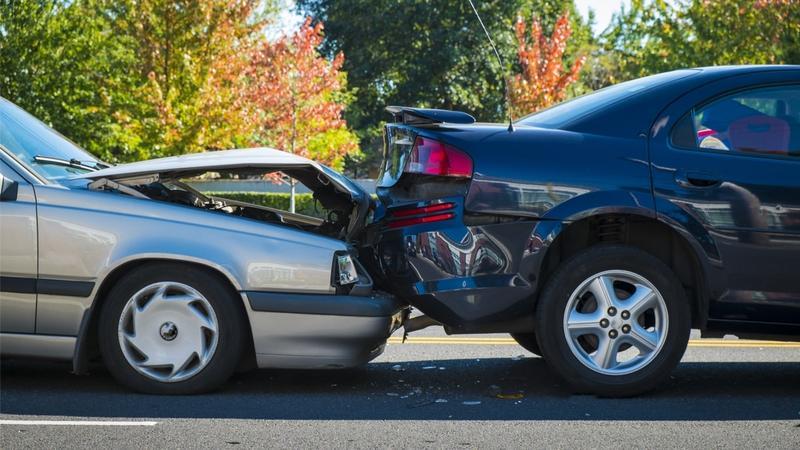The number of vehicle collisions has steadily declined over the past 20 years. According to Transport Canada, there were 72,917 collisions involving at least one injury in 2020. That’s less than half the number of collisions nearly 20 years earlier — even though the number of registered vehicles in Canada is increasing.
Unfortunately, there could come a day that your vehicle is involved in a collision beyond repair. Hopefully, it doesn’t happen to you, but there are some things you should know in the event it does.
What to do if you’re involved in a collision
If you’re in a collision and your car is badly damaged, you must call the police immediately. You should also move your vehicle off the road if you’re able to do so safely. Of course, you should turn on your hazard lights and use emergency warning triangles or cones if you have them.
While the incident is still fresh, try to record as many details about the collision as possible, such as:
- The time, date, and location of where the collision took place.
- The make, model, and licence plate number of every vehicle involved in the collision.
- The name, address, phone number, email address, and insurance information of every. driver involved, plus the contact information for any witnesses.
If you want to be prepared, the Insurance Bureau of Canada has created an automobile accident report form you can print and put in your glove compartment.
Even if you believe the collision is your fault, you shouldn’t admit to being responsible, as it’s up to the police and your insurance provider to decide who’s at fault based on a set of fault determination rules. Your insurance premium could rise if there’s a fault implication, but comparing auto insurance rates can help ensure you’re still getting the lowest premium possible if you’re at fault.
At fault versus not at fault
You should contact your auto insurance company as soon as possible to report the collision and to get information on their claim procedures.
An insurance adjuster will inspect your vehicle and decide if it can be repaired or if it’s a write-off (also called a total loss). The adjuster will calculate the value of the car before the collision and compare the cost of repairing it to the cash value and subtract the salvage value. If the cost of repairing the vehicle plus the salvage value is higher than the cash value before the collision, the insurance provider will consider it to be a write-off.
What happens next depends on whether it was an at-fault collision.
If it’s an at-fault collision, the claim will fall under your collision coverage (if you have it). Your insurance provider will pay the cost to replace the vehicle, which is based on the current market value, minus the deductible.
If you’re not at fault, you’re covered under your policy’s direct compensation property damage (DCPD) coverage. The payout is based on the current market value of the vehicle.
It’s your responsibility to purchase a replacement vehicle, and the insurance company will take possession of the written-off vehicle.
How a settlement is determined
The insurance company will use various factors to determine the vehicle’s value, such as:
- The make, model, and year.
- The odometer reading.
- The type of features, engine, condition, and aftermarket upgrades added to the vehicle.
- Market survey reports that specify sales of similar vehicles of the same model, make, and year.
- The value listed in industry publications, classified websites, and dealer ads.
Negotiating with an insurance adjuster
You may disagree with the value of the vehicle determined by the insurance adjuster. In that case, here are some things you can do to negotiate a settlement:
- Get the insurance provider’s point of view. Ask your insurance company how they came to that conclusion. Their calculations may be incorrect.
- Do some research. Find out the value of your vehicle in the market.
- Ask for advice. Your insurance advisor can be a valuable resource. Ask them to help with your claim and negotiate with your insurance provider.
- Hire an expert. Hiring an appraiser can put you on a more even playing field with the insurance company. However, this can be expensive as the cost of hiring one can start at $400 and is therefore optional.
After completing one or more of the above, give your claims representative a counteroffer to see if you can agree.
Alternatives for resolving an auto claim dispute
If you’re still unable to reach an agreement, there are some alternatives:
- Arbitration. A neutral third party will examine the facts and make the final decision. If the arbitration is binding, there will be no further disputes. If the arbitration is non-binding, there are two other options.
- Contact the insurance provider’s ombuds office. You can contact the insurance company’s ombuds office or the General Insurance Ombudservice (GIO). GIO’s services only apply if the insurance provider is a member company of the organization. There’s no cost for either.
- Hire a lawyer. The third option is to take your insurance provider to court or hire a lawyer. Depending on the amount you’re seeking, you may go to small claims court, which doesn’t always require a lawyer. Or you can hire a lawyer and file a lawsuit. However, it can be costly.
Hopefully, you will never be involved in a collision that involves the complete loss of your car, but in all cases, the best course of action is to communicate clearly with your insurance representative and make sure they are aware of all the facts in your case. If you have any questions, your insurance representative can answer them or find you the information you need.
